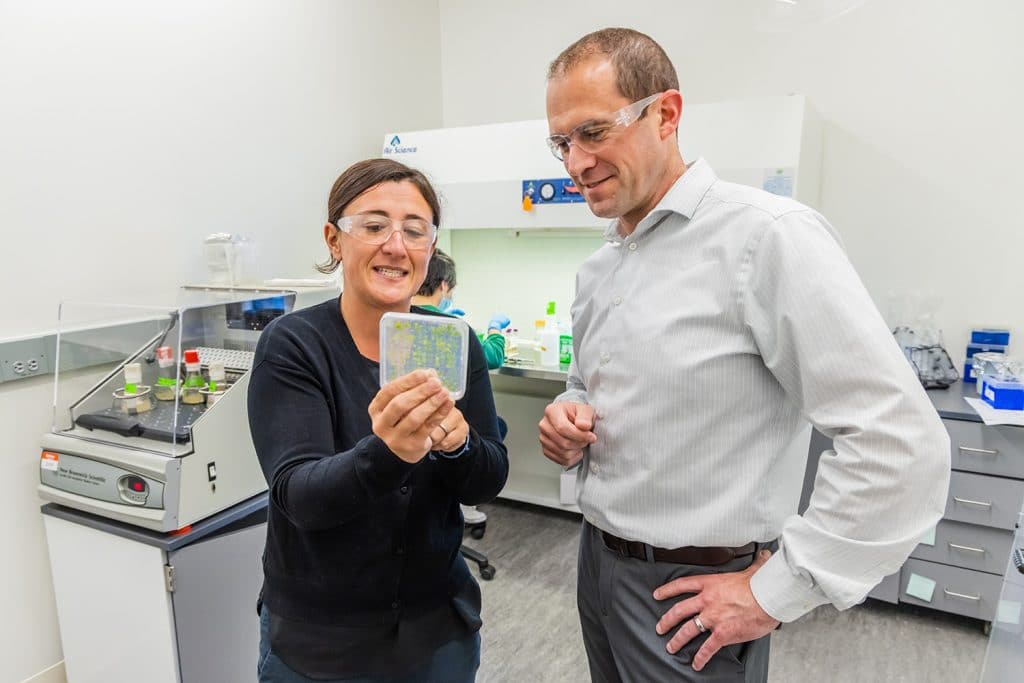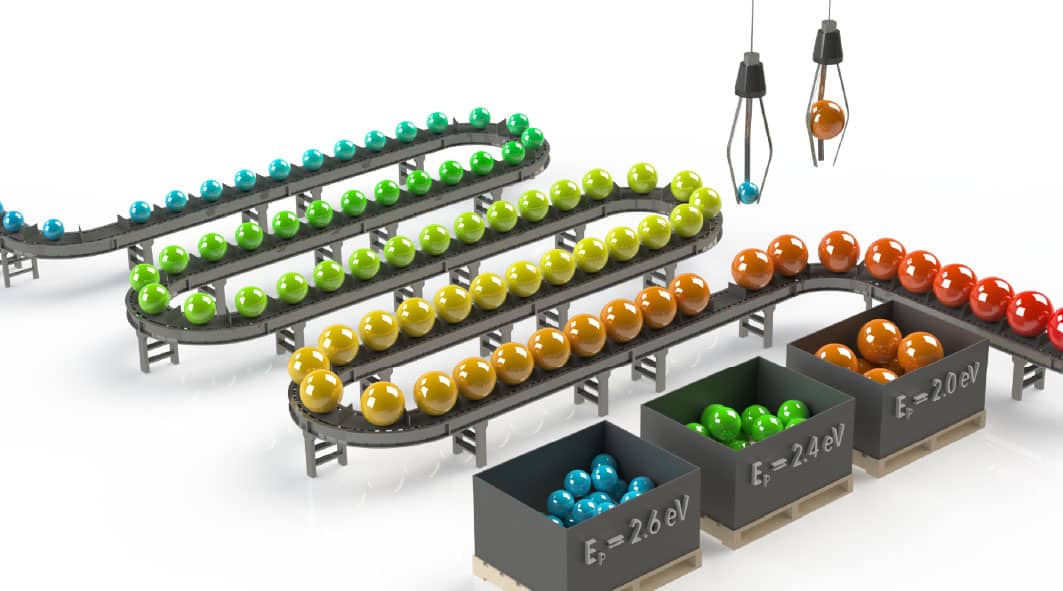STEPS Center Tackles Full Scope of Phosphorus Sustainability
NC State is leading an initiative to better steward the global use of phosphorus, an element that's vital to our food system.

Phosphorus is essential to all living things, one of the building blocks of DNA and cells’ energy currency. Food supplies rely on phosphorus fertilizers, but their use is inefficient and unsustainable: Non-renewable phosphate deposits are mined, and only 20% of the phosphorus used in the food system makes it to the human diet. A significant portion of the phosphorus seeps into soils and fresh water, becoming a contaminant that kills animals, grows algal blooms and expands coastal dead zones. Out of balance, this vital element can end life.
The Science and Technologies for Phosphorus Sustainability (STEPS) Center is working to discover and develop ways to recycle phosphorus, make our food system more efficient, and protect the environment from waste. Headquartered at NC State and awarded by the National Science Foundation, the STEPS Center was launched in October 2021 after four years of preparation. It’s already adding to global understanding about phosphorus sustainability.
“It’s been very engaging and fulfilling because we had this vision for STEPS, and now we are going through the implementation,” said Ross Sozzani, the center’s co-deputy director and an NC State University Faculty Scholar and professor of plant and microbial biology. “It’s exciting to see things falling into place.”
Led by NC State and based on Centennial Campus, STEPS includes eight additional institutions across the country: Appalachian State University, Arizona State University, Marquette University, North Carolina A&T State University, RTI International, the University of Florida, the University of Illinois at Urbana-Champaign and the University of North Carolina at Greensboro. The center was awarded during the COVID-19 pandemic, in the middle of the fall semester and before construction of its home base, the Plant Sciences Building, was completed.
“We landed one of the most prestigious centers that the National Science Foundation awards under really difficult conditions,” said Jacob Jones, the STEPS Center’s director and a Kobe Steel Distinguished Professor of Materials Science and Engineering at NC State. “But the engagement and collaboration of the team at launching the center has exceeded my expectations. We have folks interacting with the center physically and virtually. After working on this for four years, it’s been pretty exciting.”
Because phosphorus sustainability is a complex issue, STEPS relies on diversity in skills and subjects alike. The center’s research focuses on exploratory, use-inspired basic research that ranges from the molecular and materials scale to how humans interact with technology to the global economic and social impacts of phosphorus sustainability.

One of the center’s focus areas is convergence informatics, which involves taking a significant amount of information, fusing together diverse data sets and using machine-learning algorithms to inform the next steps in research. Convergence informatics uses data science to assess and predict new materials, technologies and strategies. At STEPS, researchers use these strategies to study phosphorus capture as well as phosphorus compound decomposition and modification. The center will create and disseminate new knowledge about phosphorus sustainability.
“The goal is not to create and deploy singular technology solutions,” Jones said. “We want to create a number of fundamental discoveries and developments that help the entire phosphorus scientific community move forward.”
The center has a five-year run time, with the opportunity to renew it for another five years. External partnerships are particularly important so that the center can continue making discoveries even after the award ends.
“We are discovering new phosphorus-sustainability knowledge now, and we will be doing that in year 10,” Jones said.
Research Spanning Subjects and Scales
Within 25 years, STEPS hopes to help reduce human dependence on mined phosphates by 25% and reduce the losses of point and non-point sources of phosphorus to soils and water resources by 25%.
Three themes ground STEPS: materials scale, human-technology scale, and regional and global scale. Specific fields include, but by no means are limited to, chemistry, physics, animal sciences, bioengineering, ecology, sociology and public policy.
“Our researchers are undertaking diverse work — they are sitting at microscopes looking at particles, going to wastewater treatment facilities to collect samples, using wet chemical labs to synthesize new materials, simulating biological molecules using computational techniques, and examining spatial maps of how phosphorus is distributed throughout the United States — just as a few examples,” Sozzani said.
We want to create a number of fundamental discoveries and developments that help the entire phosphorus scientific community move forward.
The center’s first research theme, on the materials scale, is to discover and develop new inorganic, organic and bio-inspired materials to free, capture and recover phosphorus and phosphorus-containing species from both liquids and solids. Examples of current research projects include the chemical and biological transformations of non-reactive phosphorus, the recovery of phosphorus using positively charged ions, and the advancement of phosphorus analytics.
The second research theme, on the human-technology scale, evaluates the viability of technologies for recovering phosphorus from complex waste streams, optimizes soil properties and improves bioaccessibility of recovered phosphates. Current research projects include developing new phosphorus compounds into a sustainable fertilizer, examining genetic mechanisms in plant phosphorus and controlling legacy phosphorus in soils.
The third research theme, on the regional and global scale, is to use a systems-level approach to evaluate how human intervention, policy intervention and technology adoption could affect phosphorus sustainability at different scales under various alternative socioeconomic, policy and environmental change scenarios. Some current research projects involve creating a national phosphorus budget and map, establishing baseline data and tools in order to simulate phosphorus flows, and evaluating stakeholder perceptions and needs in phosphorus sustainability research.
Diversity in Thought and Action
Discovering solutions to such a complex problem requires collaboration among researchers in different fields and of different backgrounds. Convergence informatics and the three research themes highlight the center’s commitment to interdisciplinary research. Even its home base, the Plant Sciences Building, fosters a culture of interdisciplinarity.
“The Plant Sciences Building allows us to bring together, in a central location, a lot of faculty, students and post-docs, and provides intersectional space for a very large and complex project,” Jones said. And it’s beneficial to be in a home with other interdisciplinary projects. “Anyone in the building can learn from our experiences. Likewise, we can learn from the other projects in the building.”
“Connecting several disciplines is a vital part of NC State’s research enterprise,” said Genevieve Garland, the associate vice chancellor of research operations and communications and the Office of Research and Innovation’s chief of staff. Garland leads the office’s Interdisciplinary Research Unit. “Our researchers bring together different skills and expertise to solve problems in a truly dynamic way. By fostering interdisciplinary initiatives, NC State creates holistic, comprehensive solutions to intricate global issues.”
Beyond research projects and subject matter, STEPS has an ambitious objective in diversity: Its broadening participation goal is to have more than 50% of involved individuals be from underrepresented groups. Diversity of culture, perspective and experience leads to original, innovative research. This goal requires leveraging all that NC State has to offer in terms of graduate recruitment, outreach to underserved communities and the alignment of the STEPS Center’s and NC State’s visions of diversity.
“The university really believes in diversity and interdisciplinarity wholeheartedly, and this is a great partnership between STEPS and NC State,” Jones said. “We have this broadening participation goal because we know bringing diverse experiences and perspectives fosters innovation.”
For at least four more years, STEPS will continue furthering diversity, applying convergence research and advancing phosphorus sustainability. In doing so, the center will prepare students to work on complex, interdisciplinary problems and discover fundamental knowledge to create a safer, healthier environment for all.


